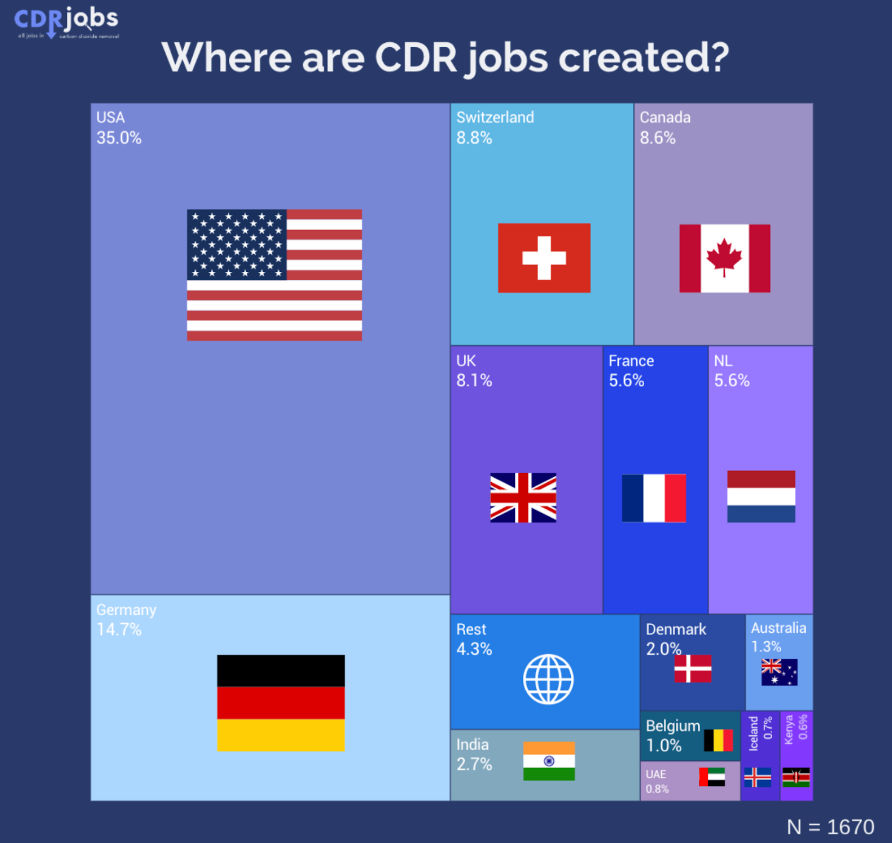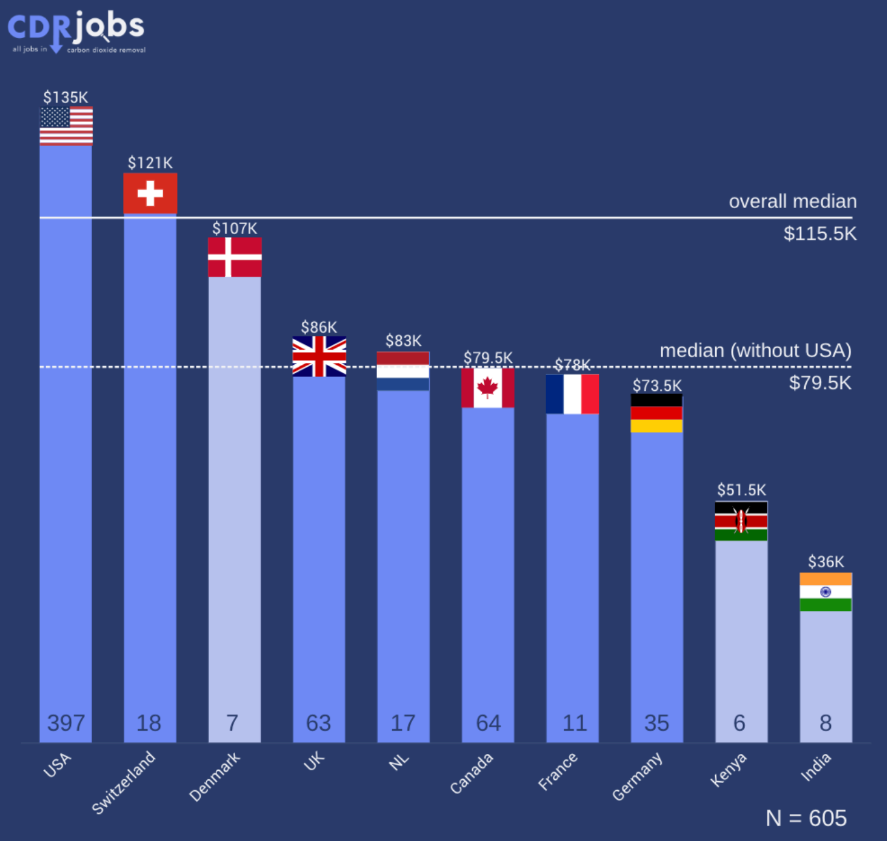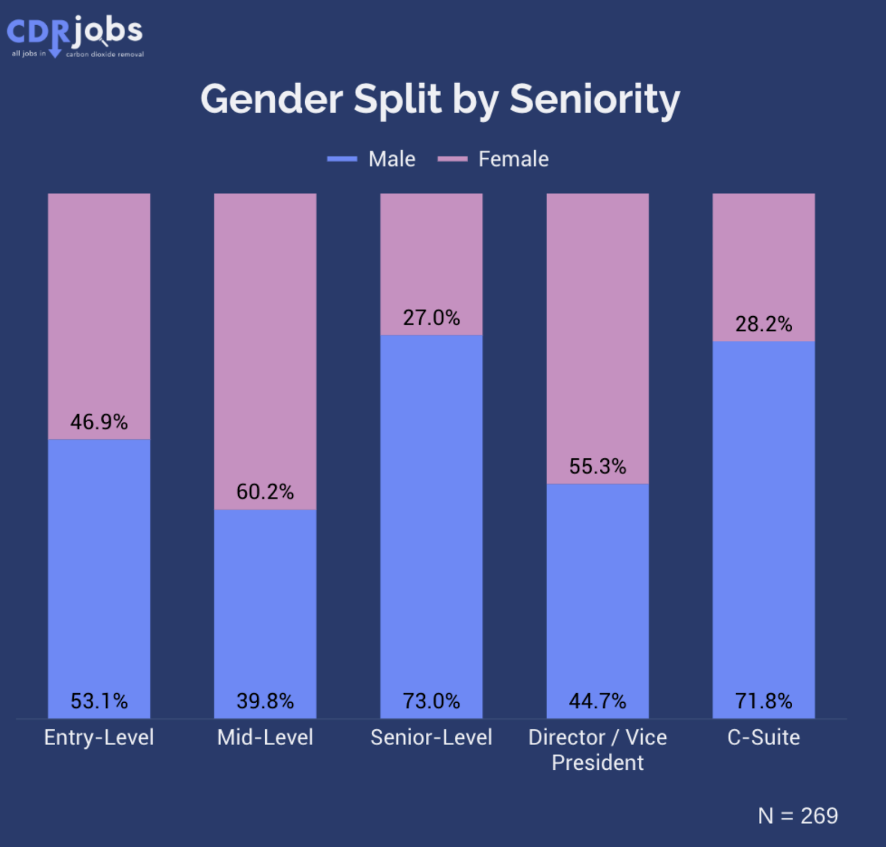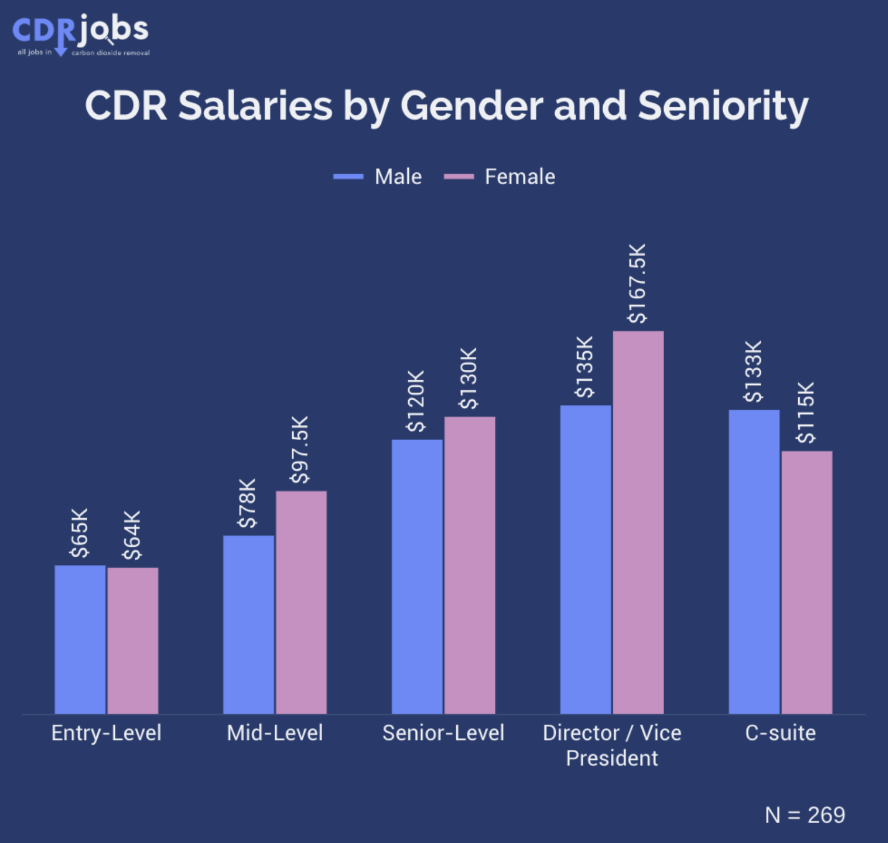Scaling carbon removal to gigaton scale: Why salary transparency matters


· 5 min read
At current pace, the world is on track to miss both the 1.5 and 2 degree global warming targets necessary to avoid the word effect of climate change. Our only chance is to drastically cut emissions from their current record levels and at the same time radically scale carbon dioxide removal (CDR) from its current 2 gigatons per year to around 10 gigatons per year by 2050. This is comparable to the growth of solar over the past 25 years. An ambitious target, but we do not have alternatives.
Besides massive amounts of innovation, capital, and infrastructure, what we will also need is millions of qualified professionals to join the CDR industry, many of whom will leave industries set for extinction such as oil and gas, which currently employs nearly 12 million people worldwide. Attracting and retaining this talent is a huge challenge which will require a concerted effort to build a fair, equitable, and competitive CDR industry.
Now is the time to get serious about this. The CDR industry is young, barely six years old in earnest. Estimates vary, but it is fair to assume that its 600 or so companies currently employ between 15,000-25,000 professionals. Given we are heading for an industry that shall surpass the size of the oil and gas industry (5.1 gigatonnes per year today) and reach over a trillion dollars, this is just a drop in the bucket.
We know what to do. We know what professionals are seeking: an opportunity to make a genuine difference while feeling valued, enjoying progressive work conditions, and being paid fairly.
Salaries can often be the sticking point in both attracting and retaining talent. Unfortunately, it is still all too common to cloud salaries in mystery. In the CDR sector, only 25% of jobs come with a disclosed salary. This has shown to particularly disadvantage vulnerable groups. Companies with transparent salaries de facto attract more and better talent.
Further, professionals expect to be paid fairly and equitably in relation to their peers. Many established industries, especially big tech, have been plagued by pay gaps, often revealed only following concerted employee action. It’s 2024 folks. No more excuses to discriminate against individuals based on their gender, race, or disability. And just a gentle reminder that diversity drives performance: research by McKinsey shows that companies in the top quartile for diversity are 39% more likely to financially outperform their competitors.
Governments have picked up on this too. In 2023, the EU Pay Transparency Directive was passed requiring action on pay transparency by the end of the 2020s. These types of regulations are also increasingly more common in the US. Soon - hopefully - companies will have to get their house in order. Might as well do it right from the start.
And remember that paying fairly is good business: the pay transparency law in California led to a 7% reduction in senior role over-compensation. Another study using compensation data of about 100,000 U.S. academics from 1997 to 2017 showed that pay transparency led to academics being paid more similarly to their peers. Finally, pay transparency has shown to decrease intent to quit by 30 percent.
So how is the CDR stacking up? CDRjobs - a company I founded in May 2024 - just released the 2024 CDR Salary Report, the first of its kind, which provides useful answers. The report is based on an anonymous survey (N = 399), salary data from those jobs which published it (N = 432), as well as other relevant data from all the CDR jobs tracked since its launch (N = 1,704).
Before diving into salaries, we can observe that access to jobs poses the first hurdle. Over 87% of jobs created are concentrated in just seven countries, with over 50% in just the United States and Germany. While almost a third of these is remote, it does still leave most of the potential workforce unable to join the CDR industry.

The median global salary in CDR is $115,500, on par with other attractive industries such as tech or consulting. However, massive geographic differences exist between the top countries like the U.S. ($135k) and Switzerland ($121k) and other large countries such as France ($78k) and Germany ($73.5k).


So what about pay gaps? Our intention was to shed light on gender, race, and disability pay gaps. However, data was only sufficient for gender. The good news? We could not identify a gender pay gap, with women in CDR generally being paid better than their male counterparts. However, the picture is not all rosy. Once you look at the C-Suite, women only constituted 28% and were paid 14% less. So clearly still some work left to smash those glass ceilings.


This is just the start. We hope that the CDR Salary Report will become a regular feature and grow exponentially from here, providing increasingly more detailed and accurate analyses while driving overall salary transparency in CDR.
And you can all contribute. Here are some specific things you can do to help us build the industry the right way:
Display salary data on all job postings: 25% is not good enough. Let’s get to 100%. You will get more, better, and more diverse candidates.
Track gender, disability, and ethnicity pay gaps internally: not a nice to have in 2024. You have the data. Start tracking and closing any gaps you might have in your organisation.
Participate in industry salary surveys: contributing to our industry-wide salary surveys helps us establish benchmarks and fosters transparency. The more participants, the more useful the analysis for you all.
Finally, make sure to read the full report and join our “Scrubbing the Skies” webinar on “Scaling Carbon Removal to Gigatons: Building the CDR Industry the Right Way” on September 18th.
We know what to do. Let’s build an industry that can attract the talent we need to reach gigaton scale.
illuminem Voices is a democratic space presenting the thoughts and opinions of leading Sustainability & Energy writers, their opinions do not necessarily represent those of illuminem.
John Leo Algo

Ethical Governance · Environmental Sustainability
Steven W. Pearce

Adaptation · Mitigation
illuminem briefings

Carbon · Environmental Sustainability
Politico

Climate Change · Agriculture
UN News

Effects · Climate Change
Financial Times

Carbon Market · Public Governance